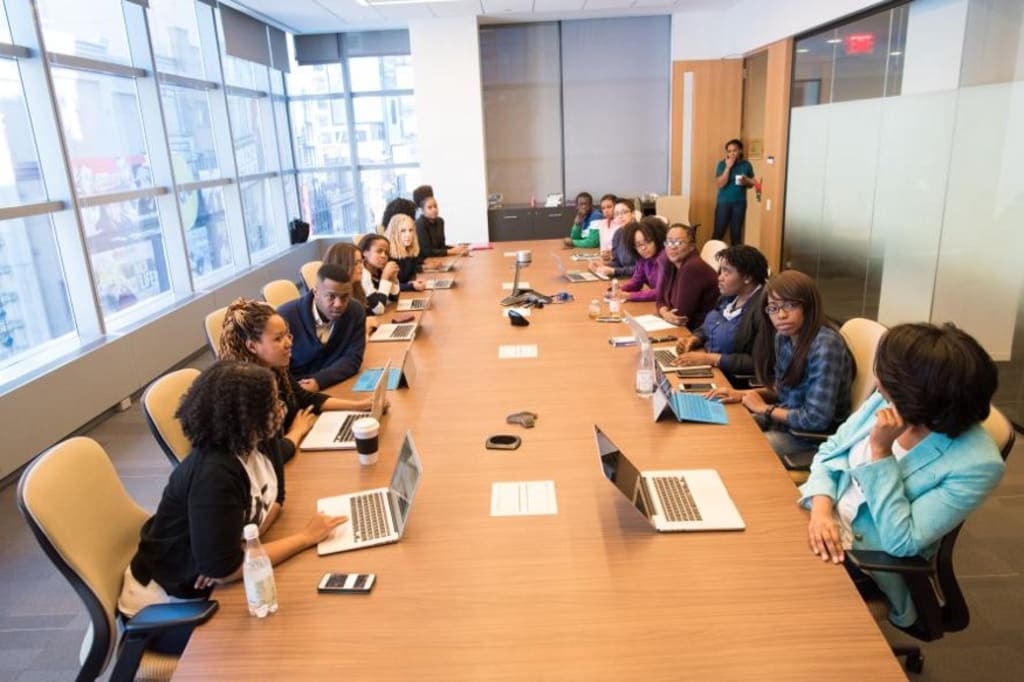Women At The Top: Does Having More Women CEOs Lead To More Inclusive Workplaces
My take on what having women at the top means for women down the ranks in organizations

The announcement of Leena Nair, as the CEO (Chief Executive Officer) of fashion major, Chanel, was greeted with much joy and fanfare. The fact that Ms. Nair was of Indian origin and that too from a different industry (she was among the execs in Unilever), as well as being appointed a CEO of a non tech firm was noted and welcomed by both industry veterans and the laypersons alike. Indeed, the congratulatory posts on social media were indicative of the significance of her achievement and the respect accorded to her appointment resembled adulatory overtones, normally reserved for celebrities. Of course, leading Chanel would make her a celebrity in her own right, given that Ms. Nair would be heading a firm that counts on such figures for its success.
Leaving aside the many firsts that Leena Nair represents and the peaks she scaled, a key question to ask is whether “breaching the glass ceiling” makes for individual triumph or collective empowerment of other women. Does having more women at the top translate into more diverse and inclusive workplaces? Or, such CEOs would become figureheads, with the ground realities unchanged. Indeed, I recall how the election of Vice President Kamala Harris in the United States and her address at the inauguration left many of my women peers and relatives teary eyed, for the simple reason that this was a moment where they could bask in the collective feeling that the glory (reflected, but, much welcome) of Kamala Harris being the first woman VP brought an aura of having almost reached the pinnacle.
However, as events have transpired over the last year or so, Ms. Harris seems to be flailing and floundering in her attempts to cement her place as a consequential Vice President. While the reasons are many and beyond the scope of what I intend to convey, the larger point is that there has been no perceptible change in the way women politicians are treated as well as no visible difference to the media portrayal of them. Of course, all this can justifiably put down to the inherent sexism that permeates mainstream media (including the progressive and left leaning ones- remember Chris Coumo), and so, accepted as yet more male griping about “lost paradise” nostalgia. But, how much difference do high profile women make to the lives of Millions of women, who both aspire to be like them, and who despite not being aspirational, simply want to “stand their ground” in workplaces, facing systemic and pervasive discrimination.
If Leena Nair and Indra Nooyi (the other trailblazing woman CEO of Indian origin) represent the heights that women (especially South Asians in the diaspora) can reach, do the organizations they lead report better progress at treating women down the ranks in a equal and equitable manner? As the cliche goes, one has to set one’s house in order first, and is there any evidence that either Unilever or Pepsico went the extra mile to make their workplaces more diverse and inclusive? Moreover, is it “business as usual” no matter who the CEO is, or the presence of women in exec positions alter the status quo? This is indeed important as the #MeToo movement brought to the fore several cases of women at all levels of the corporate hierarchy “coming out” with stories of covert and overt discrimination and how the presence of women execs did little to either deter their harassers or to make them feel accountable.
In my professional career in the IT Industry, I have seen how the “usual noises” about diversity and inclusive workplaces were routinely made which lasted until the trip to the Coffee machine, where the “boys will be boys” attitude dissipated whatever little inspiration that the women attendees to such meetings experienced. Indeed, the very real cultures of discrimination and prejudice that animate Indian workplaces seem to be as little impacted by having women as CEOs as they are by stern “messages” about so-called Zero Tolerance to gender discrimination were made. On the whole, the tendency was that the “right” signals were sought to be sent, caring little for actual shop floor behavior, that bordered on racist and sexist overtones.
While this is not a “screed” against women CEOs/execs, nonetheless, the point remains that unless there is a systemic and wholesale effort to move beyond “tokenism” and “political correctness”, periodic outpourings like #MeToo are inevitable and quickly forgotten as the “virality” slows down. If you have got the drift by now, it is that women CEOs must and should take the lead, having “battled” their way to the top amidst ruthless “Old Boys Networks” and a culture that explicitly disfavors them, right from hotel and air travel bookings on business trips, to the official parties and dinners, where cultism and tribalism take over. So, here’s wishing Ms. Nair the very best and more power to her and other women CEOs, hoping that they “walk the talk” and actualize true diverse and inclusive workplaces.
About the Creator
Rammohan Susarla
Writer seeking metaphysical fulfillment by publishing meditations and ruminations about the world.
I am a Techie turned Business Analyst who found his true calling as a writer this journey spanning 12 years has been incredibly rewarding.





Comments
There are no comments for this story
Be the first to respond and start the conversation.